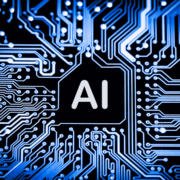How AI is Revolutionizing Telecom: Top Transformations for 2024
AI and generative AI (GenAI) use in the telecom industry has the potential to produce profoundly significant business outcomes, especially related to cost efficiency. Technological readiness for and commercialization of AI and GenAI are in process, and much more innovation is in store.
The Current State of AI Use in Telecom
The use of “traditional AI” (e.g., employing robotic process automation using structured data) is not new in the telecom industry. Telcos and vendors have been utilizing this type of AI for over a decade in various ways, including for cyber threat and anomaly detection as well as alarm and ticketing management.
What is new in the telecom industry from an AI perspective is the incorporation of GenAI (e.g., leveraging unstructured data, such as in large language models) into business and network processes. There are hundreds of viable use cases for GenAI, spanning all aspects of a communication service provider (CSP), that are being contemplated by the telecom industry, and this is where much of the focus was in 2023 and has been thus far in 2024.
Of the major domains of a CSP, TBR believes use cases related to contact centers and customer lifecycle management present the biggest opportunity to move the cost-savings needle. OSS and BSS, which underpin customer lifecycle management, will be key domains through which AI and GenAI evangelization will take place within CSPs. Network-oriented use cases for AI and GenAI are also numerous but will take a bit longer to materialize compared to contact center and customer lifecycle management use cases.
AI Transformations in Telecom: Key Changes for 2024
Contact Center
AI, particularly GenAI, will be leveraged to dramatically increase the intelligence of chatbots, enabling customers to obtain better and faster outcomes from their interactions with contact centers.
Labor will ultimately be significantly impacted by AI and GenAI, especially from a contact center perspective, but TBR expects gradual attrition, with vacated positions not being filled, rather than abrupt, large-scale layoffs at CSPs. Importantly, the AI and GenAI outputs for initial, commercialized use cases essentially all require vetting by human resources, at least at this stage of market development.
Customer lifecycle management
AI and GenAI will be leveraged to better understand customer behavior patterns and dynamically interface with customers via text or voice to optimize purchase decisions. For example, customers that typically roam in certain international countries may be proactively sent a special offer to purchase that better meets their needs, and if they have any questions before making a purchase, they can interface with a digital representative from the CSP that has the authority to answer questions and autonomously carry out tasks in the network.
Corporate Functions
AI will help automate and streamline financial reporting, legal and human resources tasks, and marketing functions, among other operational business responsibilities. GenAI will help companies automate more knowledge-based tasks, whereas before AI was only able to handle more basic, repetitive tasks.
Conclusion
The telecom industry has long utilized traditional AI like robotic process automation for tasks such as cyber threat detection and ticket management. However, the incorporation of GenAI, leveraging unstructured data, is a newer development, with numerous potential use cases within CSPs, particularly in areas like contact centers and customer lifecycle management.
In 2024 AI is expected to significantly enhance contact center interactions through smarter chatbots, while also impacting labor gradually rather than through mass layoffs. Customer lifecycle management will benefit from AI’s ability to understand behavior patterns and optimize interactions, such as offering personalized deals. Additionally, AI will streamline various corporate functions, with GenAI automating more knowledge-based tasks previously beyond AI’s capabilities.

 Getty Images via Canva Pro
Getty Images via Canva Pro
